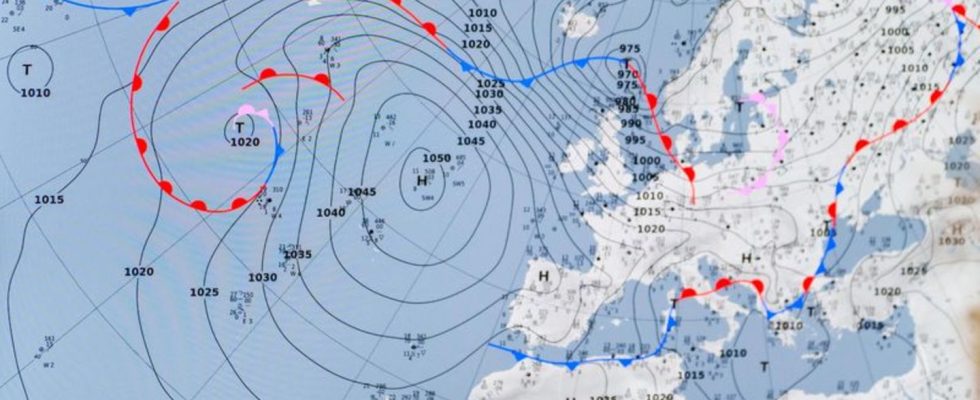Weather
Will machines soon make weather services obsolete?
A DWD employee sits in the control center of the large data center in front of a screen with a prediction model. photo
© Andreas Arnold/dpa
Private offers such as “Graphcast” from Google want to compete with authorities such as the German Weather Service. Given the huge amounts of data, it seems logical that AI has advantages.
Faster, more accurate, cheaper – this is how Google advertises its “Graphcast” product. There is artificial intelligence (AI) behind it. The AI model is able to “create medium-term weather forecasts with unprecedented accuracy,” enthuses Remi Lam from the “Graphcast” research team.
“GraphCast” is not only faster, it can also warn of extreme weather events earlier, says Remi Lam. “It can predict future hurricane tracks with great accuracy, identify atmospheric rivers associated with flood risk, and predict the onset of extreme temperatures. This capability has the potential to save lives through better preparation.”
DWD remains calm
The German Weather Service (DWD) is critical of such announcements – and remains calm. Yes, AI has “incredibly great potential,” says meteorologist Andreas Walter, an expert in climate models at the DWD. AI may be faster, but by no means better. He sees the greatest deficits when it comes to predicting extremes that have not yet occurred.
This is because of how the machine works. “Traditional numerical weather predictions use increased computing resources to improve forecast accuracy,” the developers of “Graphcast” explain in “Science.” “However, they did not use historical weather data to improve the underlying model.
From Andreas Walter’s point of view, it is precisely this “reanalysis data” with which the AI is trained that is the problem: “The AI derives its learning algorithms from the past. Our models solve the basic physical equations.”
Race for the best weather forecast
After recording the initial state of the atmosphere, in which all observation data flows into the weather model, the equations are projected into the future to determine the future weather state, according to the DWD. This numerical method is also used, for example, to create precipitation forecasts in the current flood situation. “This is of course a completely different effort. But it is also more secure than an AI process that is only based on similarities,” says Walter.
Speed is actually not the point when making predictions, adds DWD spokesman Uwe Kirsche. “It’s not a race for the fastest weather forecast. It always has to be a race for the best weather forecast.” The DWD calculates a global model twice a day for seven days in advance for 90 layers in the atmosphere. This takes about an hour. There are also four runs per day for Europe and eight for Germany.
A limiting factor is computer performance. “Meteorologists need and receive more and more data. So we need ever larger computers that can process this data,” says Kirsche. In about two years the DWD will need a new mainframe. The current one cost around 120 million euros, the next one probably won’t be any cheaper.
In meteorology, AI is “certainly a tool that can be used to provide support,” says Kirsche. The weather service is therefore currently testing AI in almost all areas. “Our goal is to improve the entire process chain – from data collection to distribution to customers – through AI,” says Kirsche and emphasizes: “Not to replace: to improve.”

